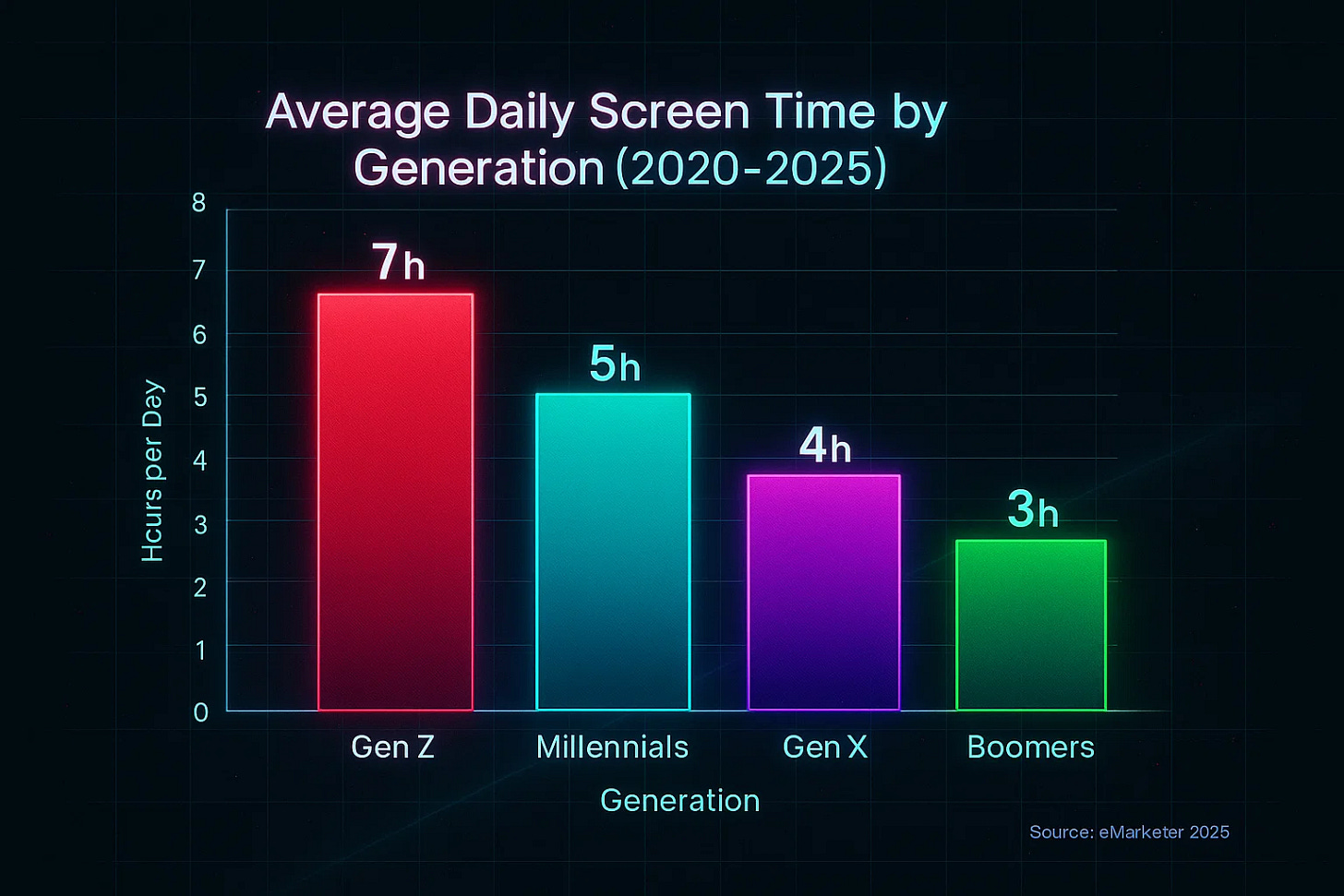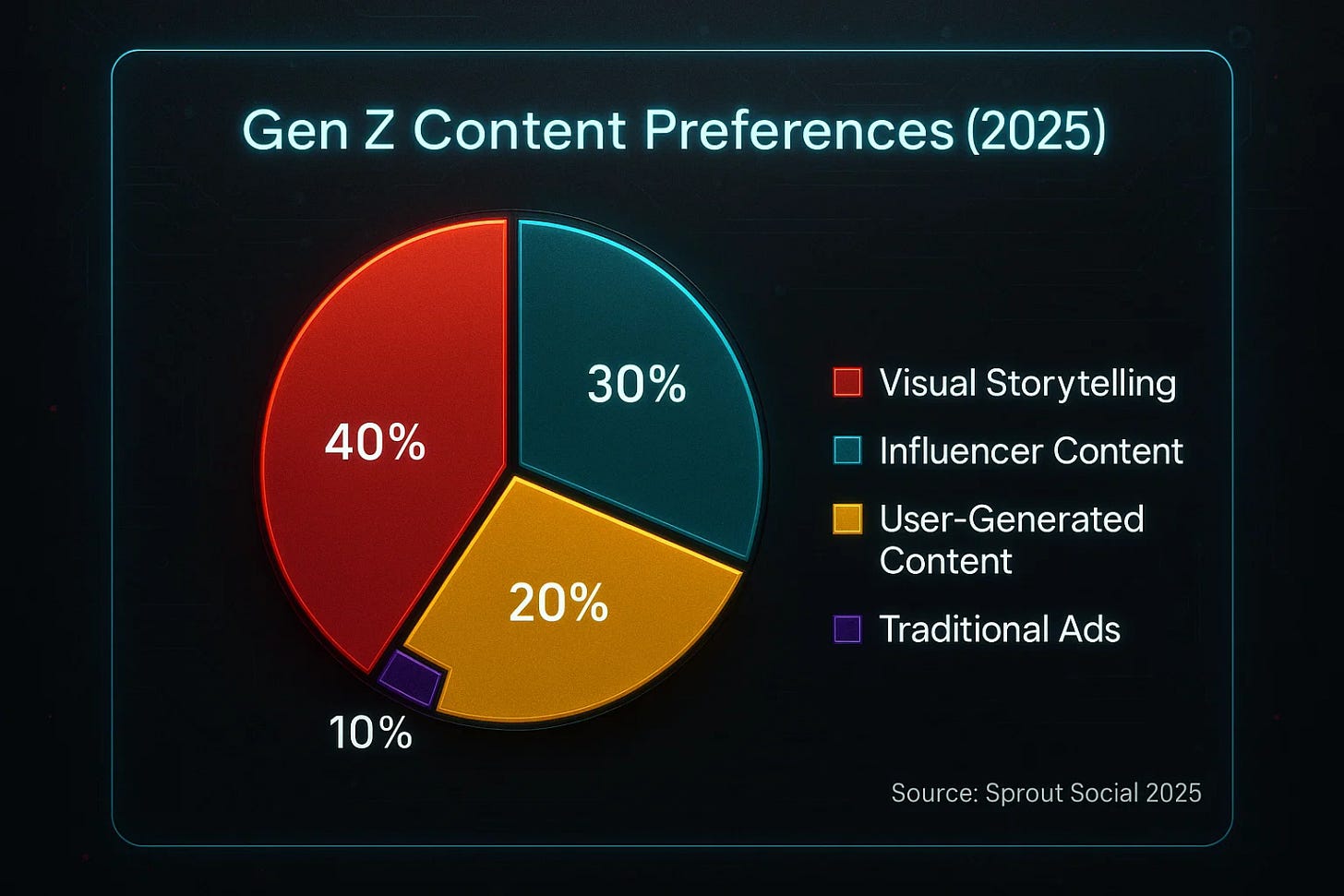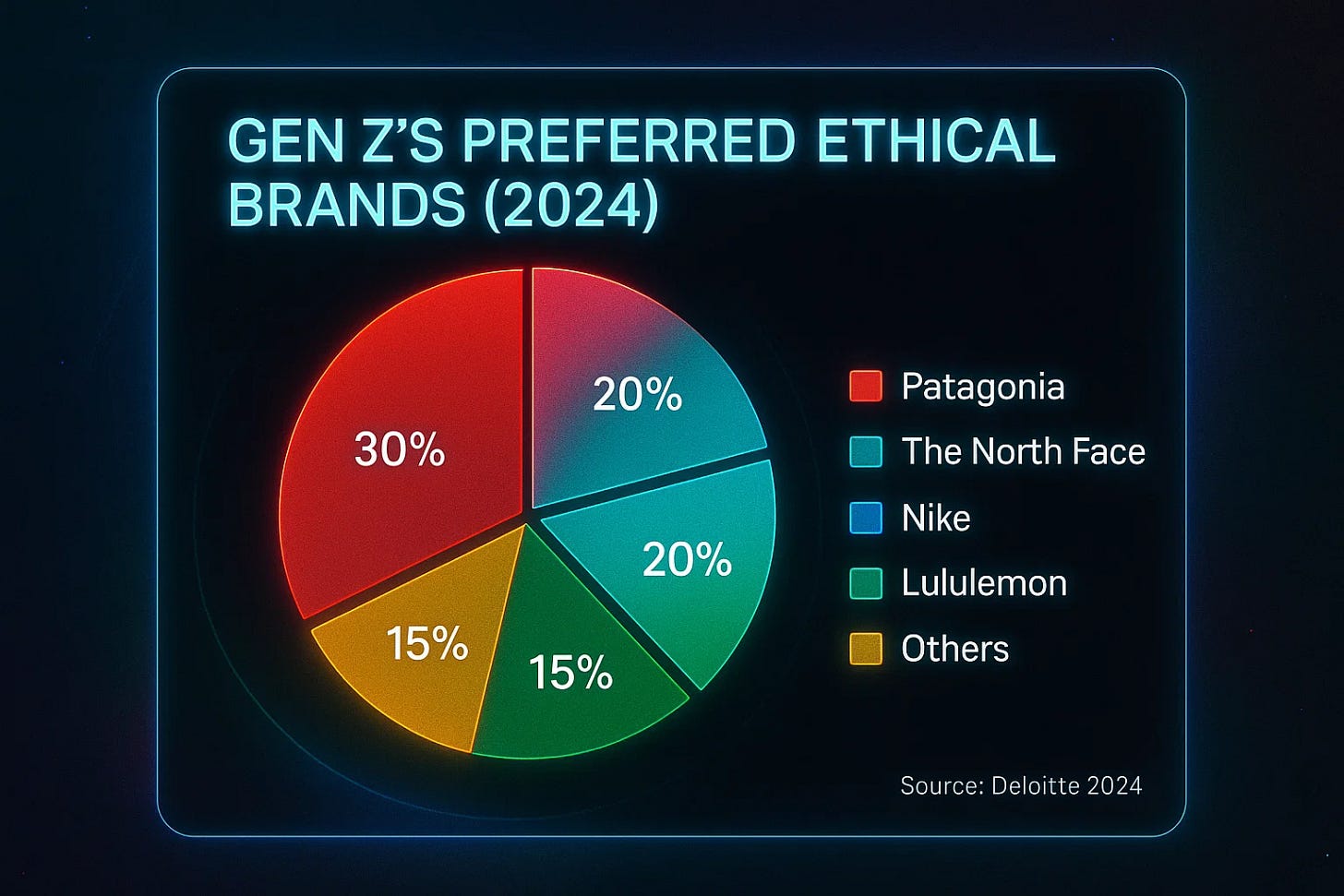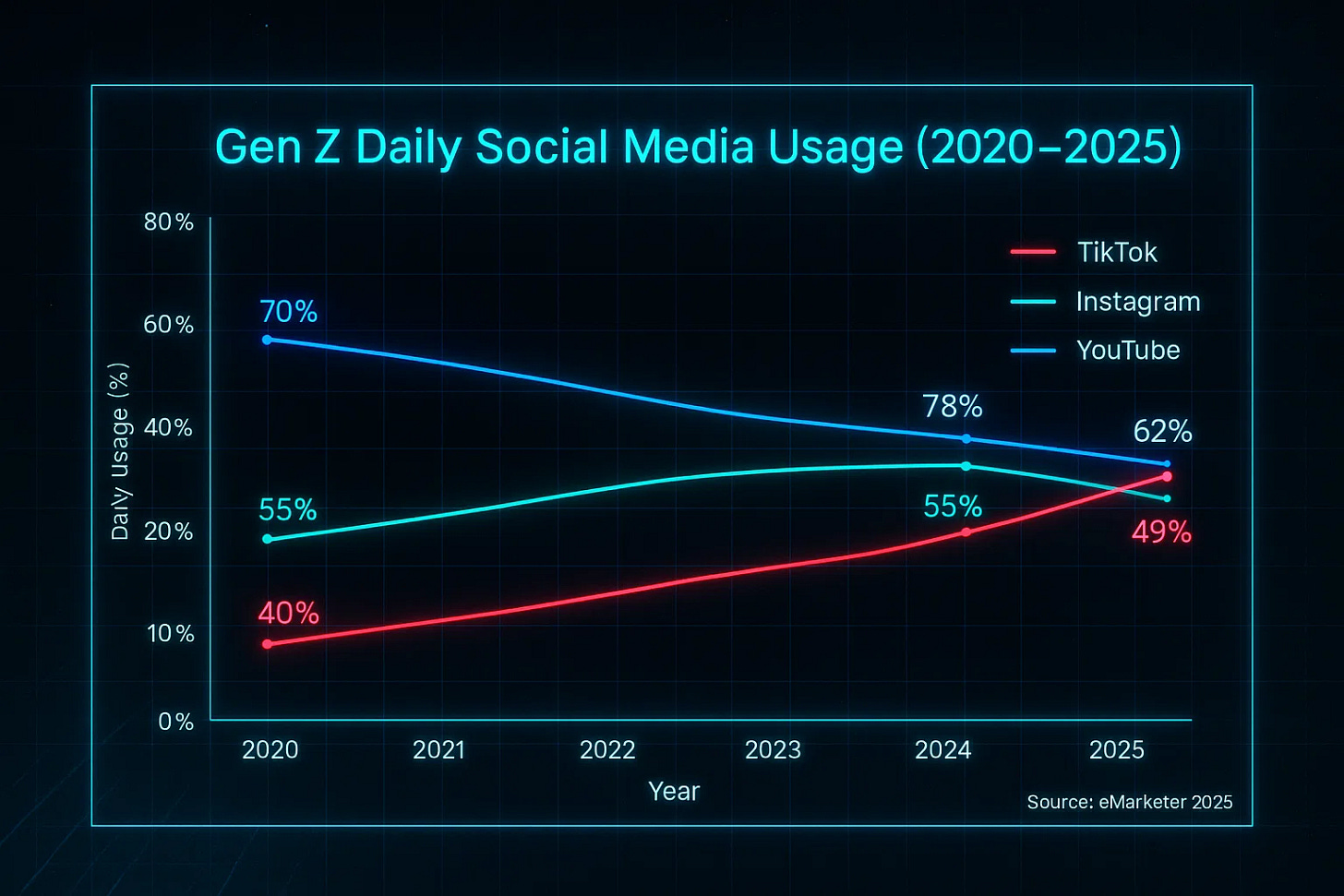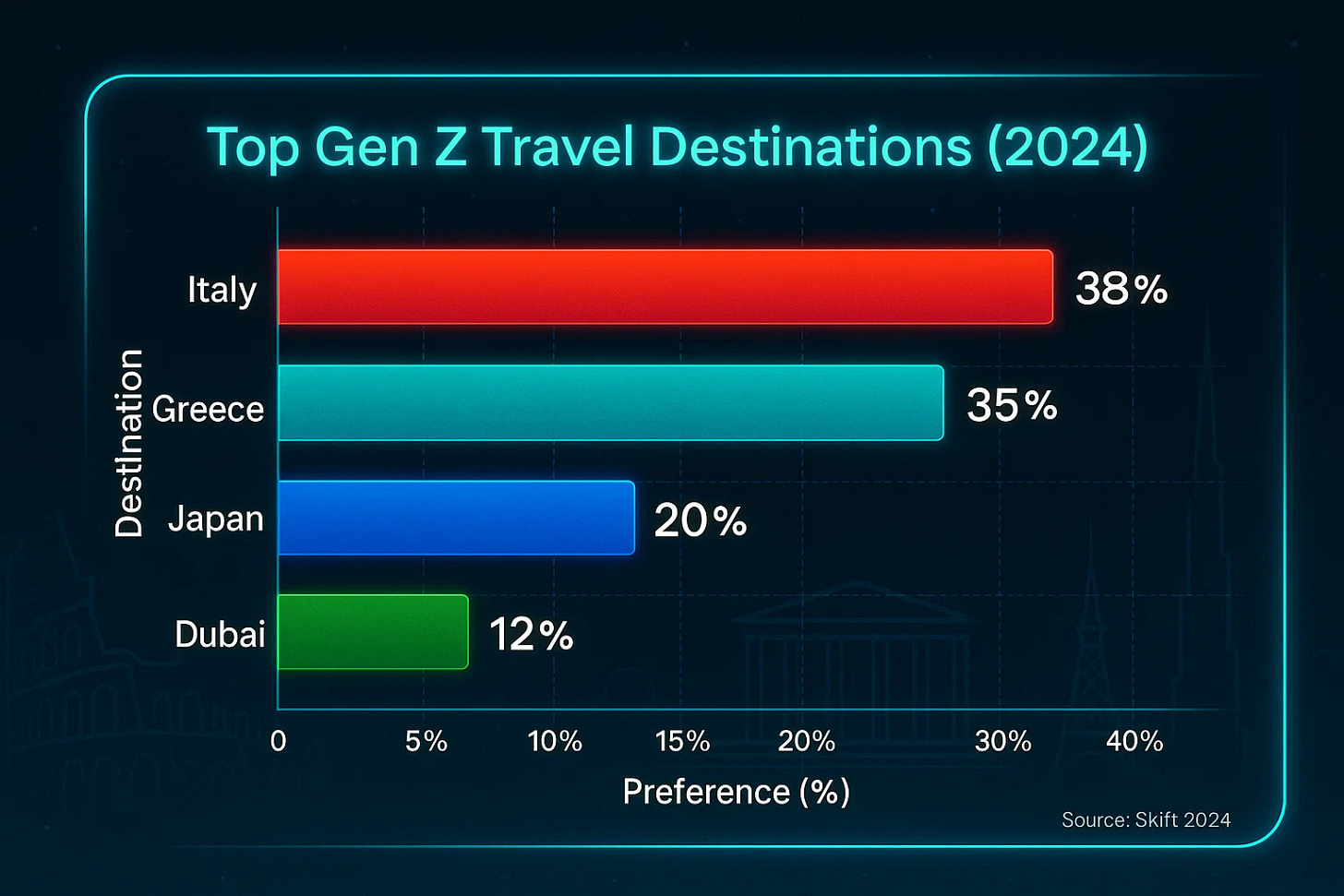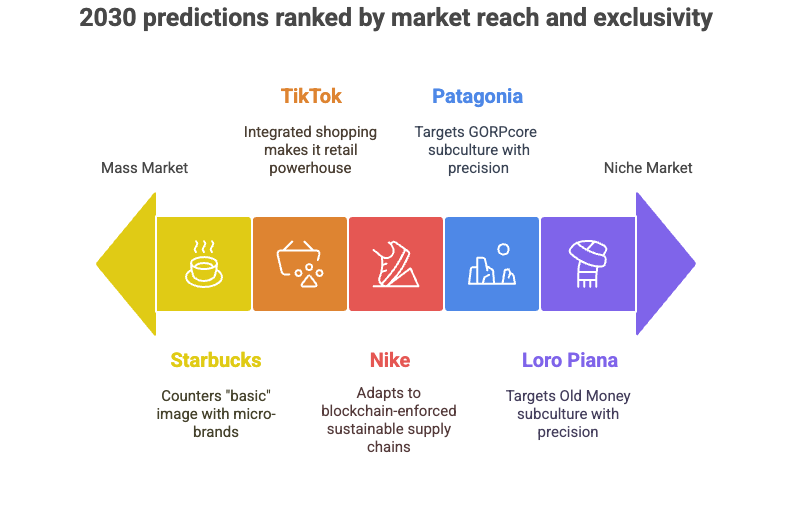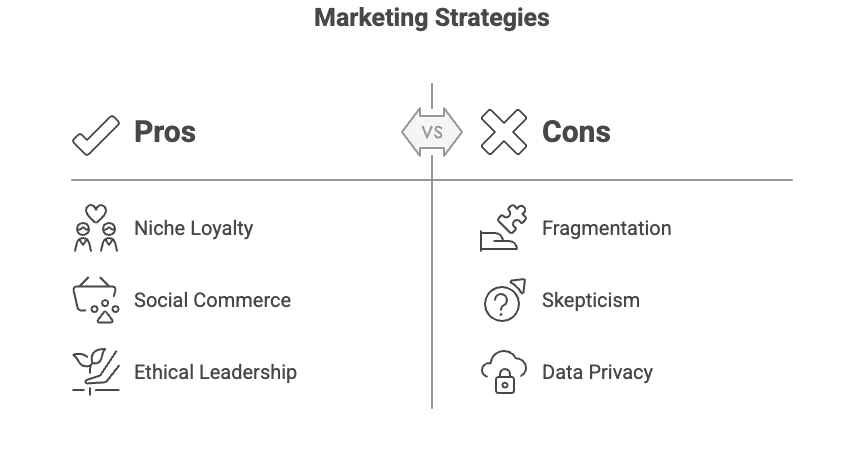In the hyper-connected landscape of 2025, Generation Z—born between 1997 and 2012—is redefining consumer culture. Commanding an estimated $600 billion in global spending power, these digital natives demand authenticity, sustainability, and brands that resonate with their diverse subcultures.
Shaped by the disruptions of COVID-19 and a relentless digital pulse, Gen Z is forcing companies to adapt or fade. I sat down with my daughter, Gia Rutkowski, a Chicago-based scholar of Gen Z behavior, to explore their North American buying habits and cultural shifts. This in-depth article blends her insights with 2025 data, offers bold predictions for 2030, and includes six interactive charts—each with a generation prompt—to illuminate the future of branding.
The Fragmented Generation: COVID’s Digital Divide
Gia describes Gen Z’s development as “blocks of experience”—middle school, high school, college, and beyond—each molded by distinct environments. The COVID-19 pandemic disrupted these blocks unevenly, creating a generational schism. College students during lockdowns missed critical social milestones, while high schoolers leaned deeper into digital platforms, fueling a web of internet subcultures. A 2023 Pew Research study found 62% of Gen Z increased screen time during the pandemic, with 45% reporting lasting changes in social habits. By 2025, 78% of Gen Z spends over 6 hours daily on devices, compared to 55% of Millennials.
This digital immersion has splintered Gen Z into micro-communities—GORPcore outdoor enthusiasts, Old Money aesthetes, Y2K nostalgics—each with unique aesthetics and values. Brands attempting broad marketing are shouting into a void. By 2030, AI-driven algorithms will deepen these digital silos, requiring precise targeting.
Prediction 1: Hyper-Niche Branding
By 2030, mass-market strategies will be obsolete. Brands will leverage AI—like xAI’s Grok—to analyze real-time social media data, crafting campaigns for specific subcultures. Imagine Patagonia launching a GORPcore-exclusive line or Loro Piana targeting Old Money TikTokers with limited-edition drops. Failure to adapt will render brands invisible.
Six Pillars of Gen Z Influence
1. Authenticity Above All
Gen Z has a nose for corporate inauthenticity. A 2024 BBMG and GlobeScan survey reveals they distrust businesses by a 5-to-1 margin, with 25% unable to name a purposeful brand. They demand transparency—supply chain audits, carbon footprints, labor policies—not hollow promises.
2. Social Media as Cultural Core
Instagram (89%), YouTube (84%), and TikTok (82%) are Gen Z’s digital hubs . TikTok drives trends, YouTube offers deep-dive reviews, and Instagram curates aesthetics. Social commerce is booming, with 48% of Gen Z planning more platform purchases in 2025 (Sprout Pulse Survey).
3. Financial Savvy, Big Influence
Gen Z wields $600 billion in spending power, influencing family budgets and their own . Brands must balance value and quality.
4. Content That Grabs
With an 8-second attention span, Gen Z craves visual, engaging content. They trust influencer and user-generated content over traditional ads, with 70% relying on independent reviews. Short-form videos hold a dominant position.
5. Mental Health Priority
Well-being is critical. Gen Z expects brands to support mental health, with employees receiving support reporting 19% higher job satisfaction . Wellness-focused branding builds loyalty.
6. Fashion as Identity
Gen Z’s style is a subcultural tapestry—Old Money elegance, GORPcore ruggedness, Y2K sparkle. Fashion outpaces other entertainment spending, with 57% discovering brands on YouTube .
Brands Winning Gen Z
Heinz x Absolut: Viral Magic
In 2023, Heinz and Absolut Vodka turned a Gigi Hadid-inspired TikTok trend into a Pasta alla Vodka sauce . The quirky collab exploded, showing Gen Z’s love for social-driven innovation.
Nike: Mobile-First Mastery
Nike’s Instagram shopping feature lets Gen Z buy instantly, aligning with their digital habits . This strategy helped Nike’s 2024 revenue hit $51 billion, with Gen Z as a key driver.
Starface: Real Talk Resonates
Starface’s acne patches use bold, humorous TikTok content to connect with Gen Z’s authenticity craving . Sales among under-25s jumped 30% in 2024.
Crocs x KFC: Niche Brilliance
Crocs and KFC’s fried-chicken clogs sold out fast, tapping into Gen Z’s taste for ironic, niche products. It’s a masterclass in creative risk.
Starbucks: From Status to Stale
Starbucks, once a millennial status symbol with Kim Kardashian’s latte posts, has lost its spark. Its 38,000+ global stores make it “basic,” Gia says. Gen Z seeks exclusivity, flocking to boutique brands like Blue Bottle. A 2024 Morning Consult survey shows 53% of Gen Z prefers local coffee shops over chains, versus 41% of Millennials . Boycotts over labor and geopolitical issues cut U.S. foot traffic 7% in 2024 (Placer.ai).
Prediction 2: Starbucks’ Artisanal Shift
By 2030, Starbucks will launch micro-brands like “Starbucks Atelier” with small-batch roasts and minimalist aesthetics to shed its generic image. With $36 billion in 2024 revenue, it has the resources, but cultural missteps could alienate Gen Z further.
Patagonia: The Ethical Icon
Patagonia is Gen Z’s beacon, blending sustainability with cultural cool. “It’s crunchy, outdoorsy, but not extreme,” Gia explains, unlike Arc’teryx’s hardcore gear. A 2024 Deloitte survey found 70% of Gen Z prioritizes eco-friendly brands, and Patagonia’s $1.9 billion revenue—55% from Gen Z and Millennials—reflects this . Its logo and green practices make it a GORPcore staple, signaling values without ostentation.
Prediction 3: Ethics as Standard
By 2030, ethical branding will be mandatory. Patagonia will lead with blockchain-verified supply chains, while Gen Z-founded startups challenge incumbents. Nike, with only 15% of Gen Z deeming it ethical (Deloitte 2024), must revamp to compete.
Digital Giants: TikTok’s Ascendancy, Meta’s Struggles
TikTok is Gen Z’s digital pulse, with 82% daily usage, followed by YouTube (84%) and Instagram (89%) . Gia notes TikTok’s “social” feel, as users connect with friends and subcultures, despite its entertainment core. YouTube dominates long-form content. Amazon’s $614 billion U.S. revenue in 2024 is marred by 59% of Gen Z distrusting its labor practices (Harris Poll 2024). Meta is unpopular, with only 29% of Gen Z viewing it positively due to Instagram’s stagnation (YouGov 2024). Google, seen as a neutral search engine, enjoys 51% favorability.
Prediction 4: TikTok’s E-commerce Dominance
By 2030, Meta will lose ground unless Instagram matches TikTok’s algorithmic precision. TikTok, if it navigates U.S. regulations, will lead social commerce with integrated shopping. Apple’s iPhone, owned by 68% of U.S. Gen Z (Statista 2025), will maintain its status edge over Google’s Android.
Fashion: Subcultures and Exclusivity
Gen Z’s fashion is a vibrant mosaic. The “Old Money” trend—Loro Piana’s cashmere, Hermès Birkins, crisp linens—signals inherited wealth, with 48% of Gen Z following luxury trends on TikTok (Vogue Business 2024). Loro Piana’s under-25 sales rose 15% in 2024. Mass-market luxury like Gucci and Louis Vuitton is “trashy,” diluted by counterfeits. Niche brands like Asics, tied to GORPcore, saw a 22% sales spike (NPD Group 2024).
Prediction 5: Subculture-Driven Fashion
By 2030, brands will target subcultures—Old Money, GORPcore, Y2K—with TikTok influencer collabs and limited drops. Fast fashion like Shein will face backlash as 65% of Gen Z demands sustainable clothing by 2028 (McKinsey). Luxury must maintain exclusivity to avoid Gucci’s decline.
Destinations: Authenticity Over Glitz
Gen Z rejects commercialized destinations like Dubai, with only 12% listing it as a top choice (Skift 2024). They prefer culturally rich locales—Italy (38%), Greece (35%)—driven by TikTok’s “European summer” aesthetic (#EuropeanSummer: 1.2 billion views by June 2025). Japan’s cultural appeal spurred a 30% rise in Gen Z Airbnb bookings . “Dubai’s too corporate,” Gia says. “Gen Z wants real.”
Prediction 6: Offbeat Travel Surge
By 2030, Gen Z will flock to lesser-known spots like Matera, Italy, or rural Japan, with Airbnb’s AI recommending hidden gems. Dubai must emphasize cultural storytelling to regain appeal. Skift projects a 20% increase in Gen Z travel to non-mainstream destinations by 2028.
AI: The Branding Catalyst
AI is transforming Gen Z branding:
Personalization: Algorithms tailor ads to individual preferences.
Content Creation: AI generates TikTok-ready content instantly.
Customer Service: Chatbots provide real-time support, used by 47% of Gen Z weekly .
Challenge: Data transparency is critical, with 60% of Gen Z concerned about misuse (Gallup 2025).
Prediction 7: AI-Driven Trust
By 2030, AI will power virtual influencers and predictive analytics for hyper-personalized campaigns. Brands must pair this with transparent data policies to maintain Gen Z’s trust.
Predictions for 2030
Hyper-Niche Branding: AI will target subcultures with precision—Patagonia for GORPcore, Loro Piana for Old Money.
Starbucks’ Artisanal Pivot: Micro-brands will counter its “basic” image.
Ethical Mandate: Blockchain will enforce sustainable supply chains; Nike must adapt.
TikTok’s E-commerce Lead: Integrated shopping will make TikTok a retail powerhouse.
Subculture Fashion Boom: Niche collabs will drive style trends.
Authentic Travel Rise: Offbeat destinations will dominate, fueled by AI.
AI Transparency: Clear data policies will be essential.
Challenges and Opportunities
Challenges:
Fragmentation: Subcultures require tailored strategies.
Skepticism: Gen Z’s distrust demands authenticity.
Data Privacy: Transparent AI use is critical.
Opportunities:
Niche Loyalty: Subculture campaigns build strong bonds.
Social Commerce: TikTok and Instagram enable instant sales.
Ethical Leadership: Sustainability and wellness resonate.
The Gen Z Imperative
Gen Z is a cultural force, rewarding brands that align with their values and punishing those that don’t. From Patagonia’s eco-cred to TikTok’s retail potential, success lies in authenticity and precision. As Gia puts it, “It’s about what the brand says about you.” Brands that listen will thrive; those that don’t will vanish. Follow Gia’s Substack or TikTok (@attemptedsoc) for more on Gen Z’s evolving influence.






